To master tea blending at home, focus on three key secrets. First, understand tea flavor profiles across different categories like black, green, and oolong teas. This knowledge will help you create balanced and harmonious blends. Second, learn to balance ingredients properly, using a high-quality base tea (70-80%) complemented by primary (15-20%) and secondary (5-10%) flavorings. Finally, craft unique signature blends by combining unexpected elements and experimenting with unconventional pairings. Start with your favorite flavors, add ingredients incrementally, and keep detailed records of your process. These secrets will set you on the path to becoming a skilled tea artisan.
Understanding Tea Flavor Profiles
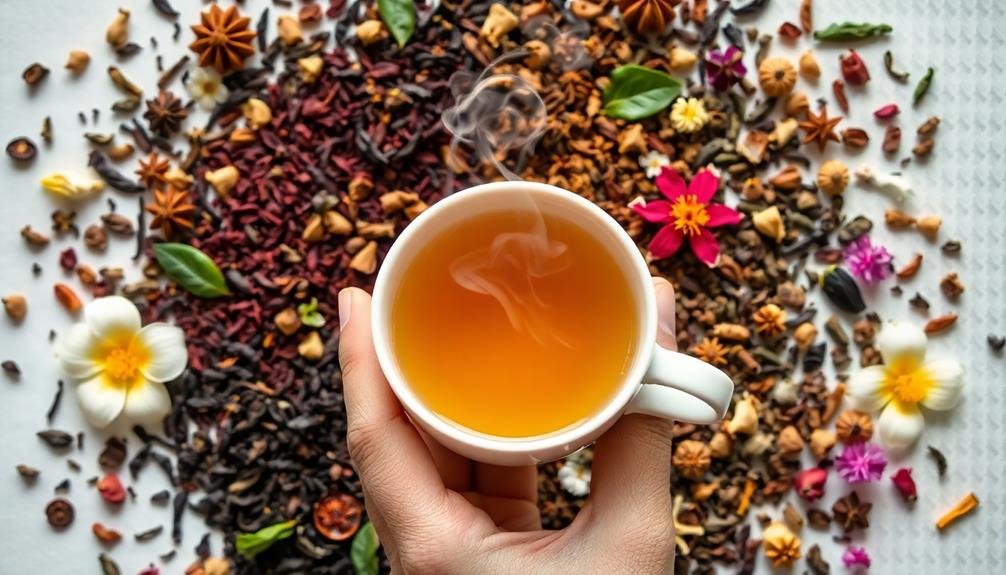
Mastering the art of tea blending begins with understanding the diverse flavor profiles of different teas. You'll need to familiarize yourself with the main tea categories: black, green, white, oolong, and pu-erh. Each type has distinct characteristics that contribute to its unique flavor.
Black teas are typically bold and robust, with notes ranging from malty to fruity. Green teas offer a fresher, grassier taste with vegetal or nutty undertones. White teas are delicate and subtle, often featuring floral or honey-like notes. Oolong teas vary widely, from light and floral to rich and roasted. Pu-erh teas have an earthy, complex flavor that develops with age.
Within these categories, you'll find regional variations and processing methods that further influence flavor. For example, Chinese black teas differ from Indian ones, and steamed Japanese green teas taste different from pan-fired Chinese varieties.
Pay attention to aroma, body, and aftertaste when tasting teas. Take notes on flavors you detect, such as citrus, smoke, or spice. This knowledge will help you create balanced and harmonious blends by combining complementary or contrasting flavors.
Balancing Ingredients for Harmony
With a solid grasp of tea flavor profiles, you're ready to start combining ingredients harmoniously. The key to successful blending lies in achieving balance. Start by selecting a base tea, which will typically make up 70-80% of your blend. Choose a high-quality tea that complements your desired flavor profile.
Next, add your primary flavoring ingredients. These should comprise about 15-20% of the blend and provide the dominant taste. Be careful not to overpower the base tea; instead, aim for a harmonious fusion.
Secondary ingredients, making up the remaining 5-10%, add depth and complexity to your blend. When balancing flavors, take into account the strength, aroma, and mouthfeel of each component. Aim for a well-rounded taste that doesn't overwhelm any single element. Use stronger flavors sparingly and experiment with different ratios to find the perfect balance.
Don't forget to take into account the visual appeal of your blend. Mix different leaf sizes and shapes for an attractive appearance. Remember that some ingredients may settle to the bottom, so guarantee even distribution when packaging your blend.
Crafting Unique Signature Blends
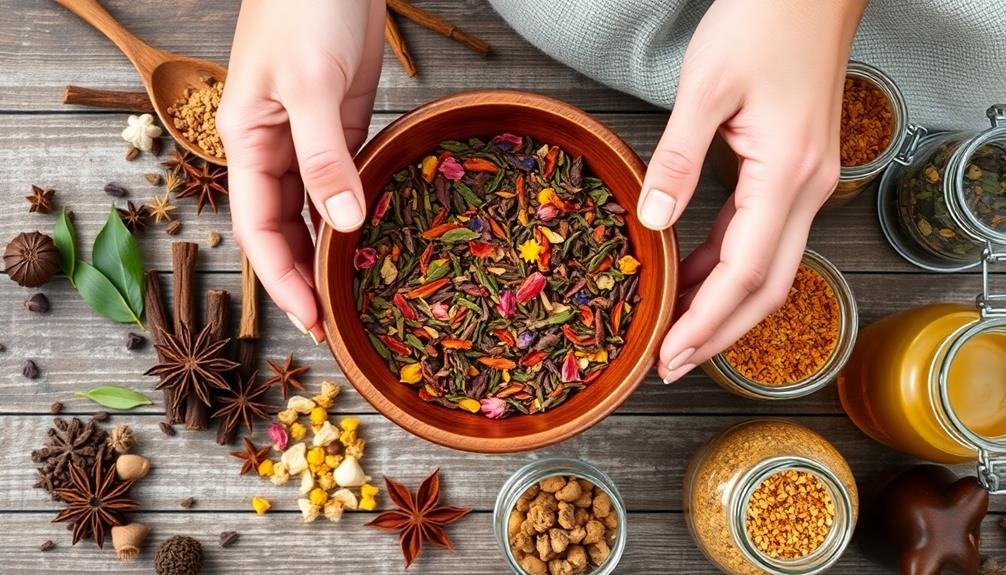
Now that you've grasped the basics of balancing ingredients, it's time to create your own unique signature blends. Start by identifying your favorite flavors and aromas.
Consider combining unexpected elements, like floral notes with spicy undertones or fruity accents with earthy bases. Don't be afraid to experiment with unconventional pairings.
Next, select a base tea that complements your chosen flavors. Black tea works well with bold additions, while green tea pairs nicely with lighter, more delicate ingredients. White tea offers a subtle canvas for nuanced blends.
Once you've chosen your base, add your signature ingredients in small increments, tasting as you go.
Keep a detailed record of your blending process, noting the types and quantities of ingredients used. This will help you replicate successful blends and refine less successful ones.
Remember that temperature and steeping time can greatly impact the final flavor profile, so experiment with these variables as well.
Frequently Asked Questions
How Long Can I Store My Homemade Tea Blends?
You can store your homemade tea blends for up to 6 months in airtight containers. Keep them in a cool, dark place away from moisture and strong odors. For the best flavor, try to use them within 3 months.
What Equipment Is Essential for Beginners in Tea Blending?
You'll need a few key items to start blending tea: airtight containers, a kitchen scale, measuring spoons, and a notebook. Don't forget a fine-mesh strainer and labels. A mortar and pestle can be helpful too.
Are There Any Tea Combinations to Avoid for Health Reasons?
You should avoid combining tea with iron-rich foods, as it can hinder iron absorption. Don't mix caffeinated teas with certain medications. Be cautious with herbal blends if you're pregnant or have specific health conditions. Always consult your doctor.
Can I Use Artificial Flavorings in My Tea Blends?
You can use artificial flavorings in your tea blends, but it's not recommended. They often contain chemicals and may alter the natural taste. Instead, try using dried fruits, herbs, or essential oils for healthier and more authentic flavors.
How Do I Properly Label and Package My Custom Tea Blends?
Label your custom tea blends clearly with ingredients, brewing instructions, and a unique name. Use airtight containers to preserve freshness. You'll want to include storage tips and a "best by" date. Consider attractive packaging for gifting.
In Summary
You've now revealed the secrets to mastering tea blending at home. Armed with knowledge of flavor profiles, ingredient balance, and blend creation, you're ready to craft your own unique teas. Don't be afraid to experiment and trust your palate. Remember, practice makes perfect, so keep blending and tasting. Soon, you'll be serving up your own signature blends that'll impress friends and family. Embrace your creativity and enjoy the journey of becoming a tea blending expert.


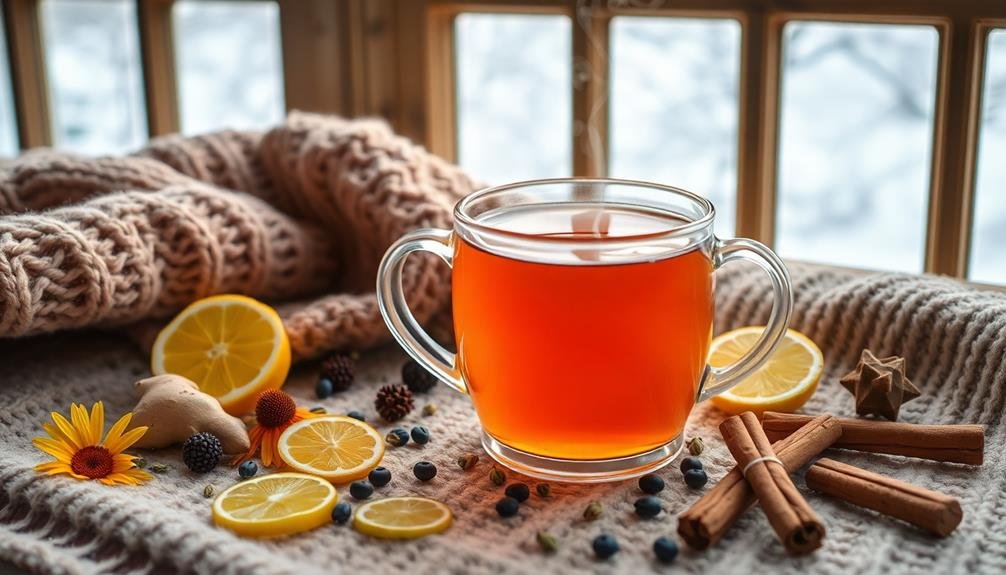
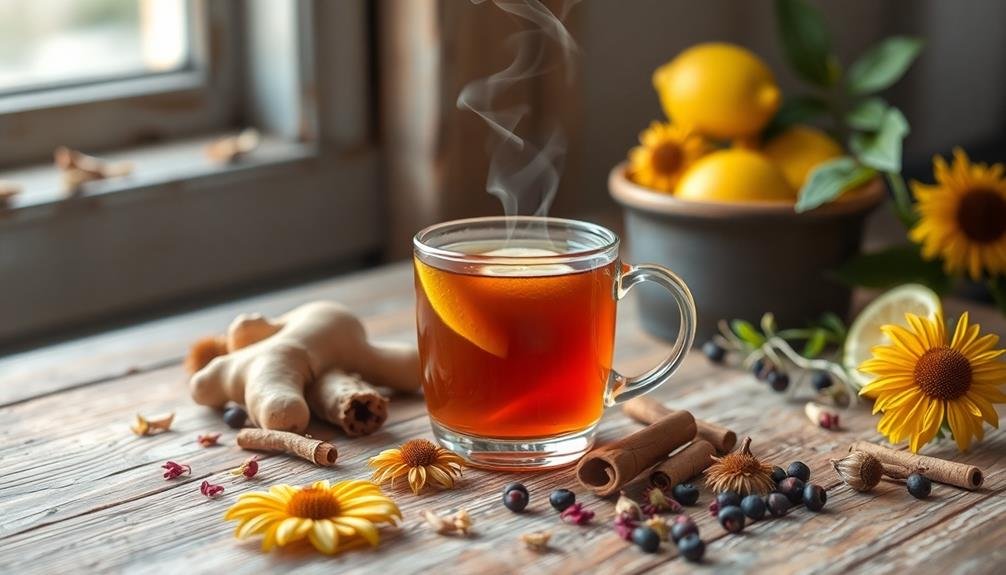
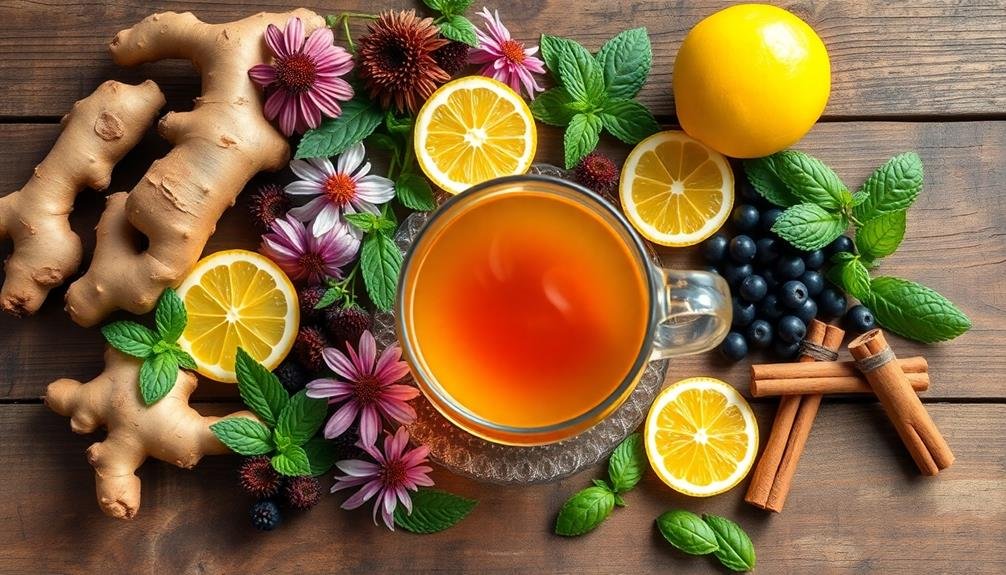
Leave a Reply